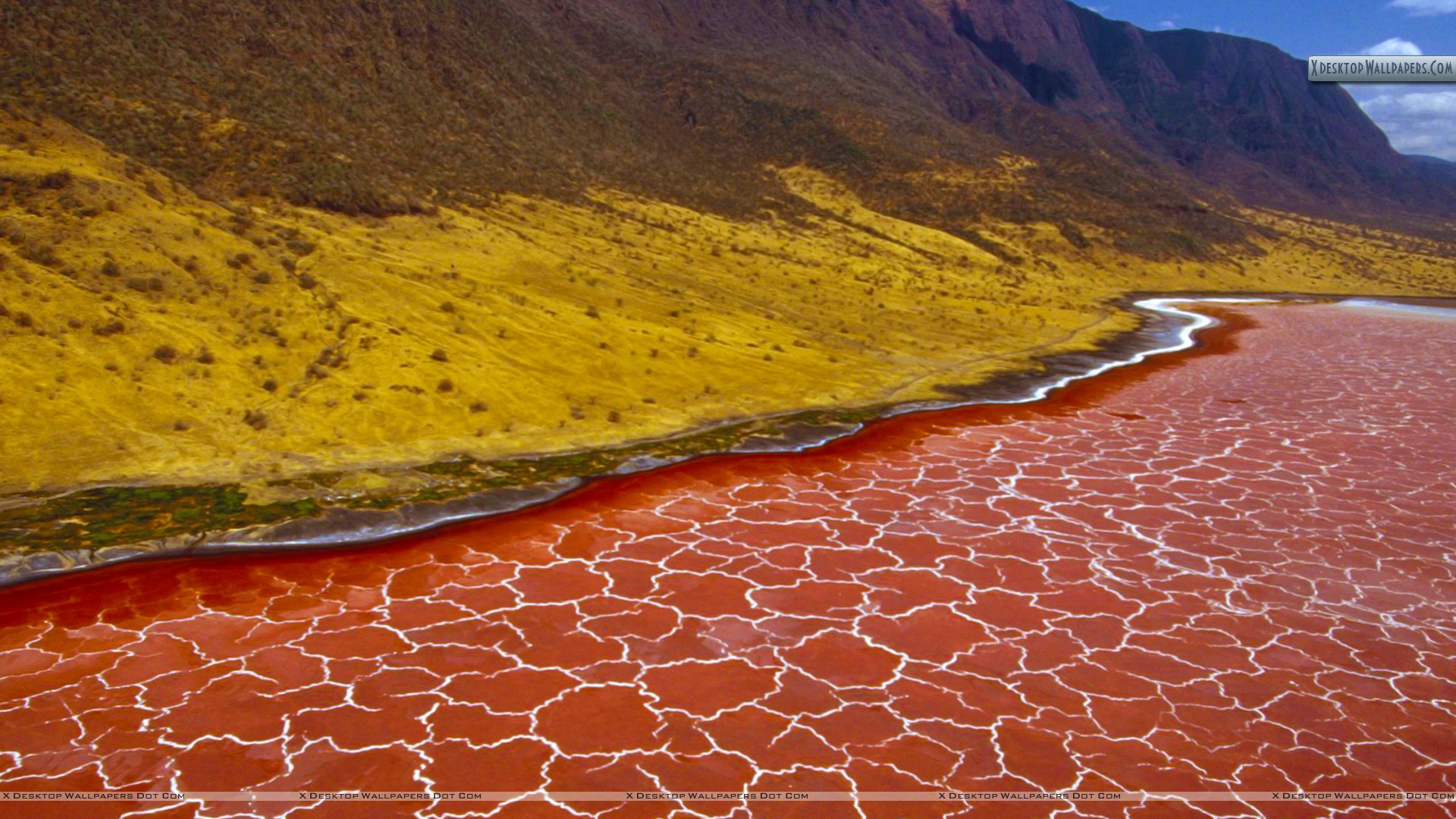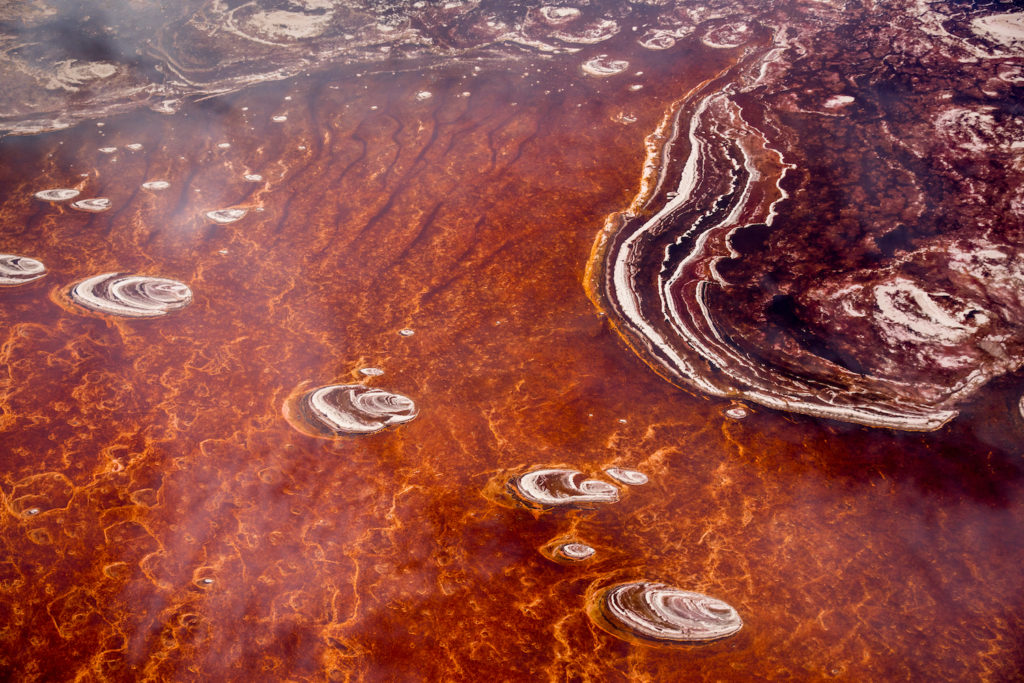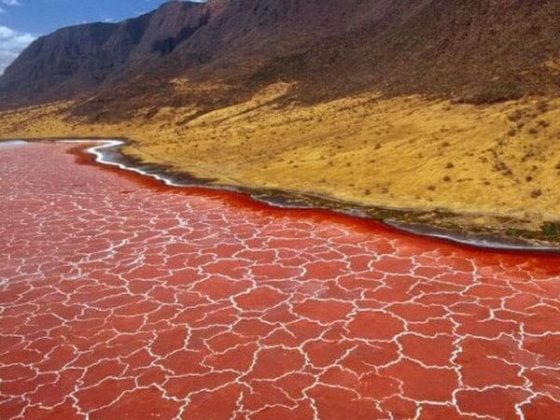

Brandt repositioned the dead creatures in living positions as though the lake converted the creatures into stoned statues. with sharp outlining of sodium carbonate deposits around the bodies of the creatures on the shoreline of the lake. He found remains of creatures like Flamingos, Bat, etc. The increasing danger for the lake was highlighted by renowned photographer Nick Brandt, who captured in his book “ Across the Ravaged Land” haunting images of Lake Natron.

The lake does not fall in the network of protected areas, moreover the area surrounding the lake though regulated, is allowed for hunting and hence the ecosystem lacks formal protection as a whole. The lake became an active development site, for increasing tourist attraction and also for the extraction of soda ash which was greatly refuted as it greatly threatened the fragile ecosystem and the vulnerable population of the lesser flamingos. The lake is inaccessible to the extent that it was only discovered somewhere in 1954 and hence has hence in past not been subjected to human fragmentation. The lake is further threatened by the small sodium bicarbonate extraction plant. The project is likely to potentially alter the ecology and hydrology of the lake due to changed patterns in water flow and hence threaten the world’s most secure and largest breeding ground for the lesser flamingos. The major threat surrounding Lake Natron is the hydroelectric power project on Ewaso Ngiro River by the government of Kenya. The lake having the highest concentration of the flamingos in the whole of East Africa is the only regular ground of breeding for the lesser flamingos ( Phoeniconaias minor) in Africa. Lake Natron also has distinctively high populations of many birds endemic to the wetlands.

Tilapia is well acclimatized to the high salinity, temperature and changing conditions as a result of the slightly acidic rains. This small fish is found on the edges of the inlets to the hot springs. Oreochromis alcalica or commonly known as tilapia inhabitate the lake in abundance. However, populations of certain species are well adapted to this environment.

The mud flats too are just as difficult and inhospitable for mammals due to strong winds, extreme temperatures and scarce vegetation. The saturated salt water of this saline lake with temperature reaching as high as 41degree Celsius near the hot mineral spring and erratic rainfall causing dramatic change in pH due to flooding of the lake with cold, slightly acidic water makes the lake difficult for life to thrive in. Though the lake lacks macrophytic vegetation but is highly productive in terms of algae with blue-green algae species like spirulina spp. which tend to grow on the saline soil around the lake. The lake is surrounded by a few halophytic plants like Cyperus laevigatus, Juncus maritimus, etc. Lake Natron is rich in sodium carbonate and is hence highly alkaline with a pH of about 10.5 and is hence viscous to touch. Adding to the alkalinity of the lake are the sodic soils resulting from the volcanic activity that form the bed of the lakes. This climatic desiccation over the years has caused the lake to become saline with high contents of sodium carbonate decahydrate and sodium sesquicarbonate dehydrate. The lake witnesses a very erratic rainfall pattern with most of the rainfall in between the months of December and May followed by an extended dry period with an average temperature of over 40 degree Celsius causing high rates of water loss due to high evaporation rates. The blue-green algae filtered out by the lesser flamingos and the copepod larvae found in the shallow waters for the greater flamingos are its source of nutrition. This very shallow lake, which runs about 57 kilometers long and is about 22 kilometers wide is home to flocks of both lesser as well as greater flamingos which breed on the mud flats surrounding the lake regardless of its high salinity. This Ramsar wetland site, principally fed by Southern Ewaso Ngiro River and mineral hot springs provides a pretty inhospitable and inappropriate environment for the majority of the plants and animals by virtue of its high temperature and salinity and rapidly changing salinity post rains. Lake Natron, the East African Halophytic situated along the Great Rift Valley in Tanzania is a saline soda lake. Image source: Satellite imagery of Lake Natron, NASA


 0 kommentar(er)
0 kommentar(er)
